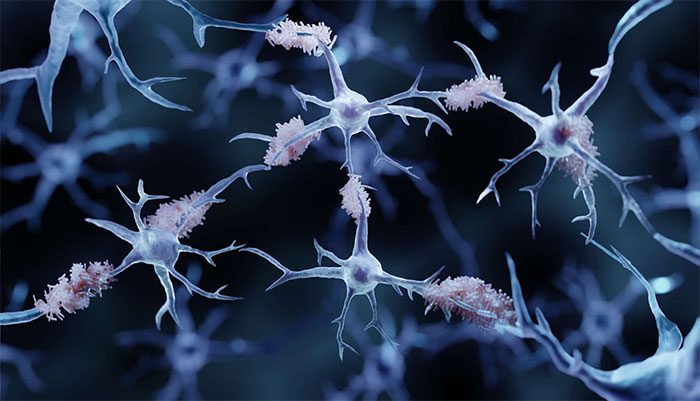Researchers Test New Method to Slow Alzheimer’s Progression Through Blood Transfusion.
According to experts, this approach aims to prevent the aggregation of beta-amyloid peptides, which partially causes the damage in the brain. Alzheimer’s disease is the most common neurodegenerative disorder leading to dementia worldwide, and there is currently no cure.
This disease is caused by the accumulation of abnormal protein aggregates in the brain, developing slowly over many years.

Alzheimer’s disease is the most common cause of dementia. (Photo: Futura Sciences).
Specifically, Tau proteins and amyloid beta peptides are primarily responsible for this condition. The beta-amyloid accumulates and forms amyloid plaques outside of neurons (extracellular).
The amyloid plaques hinder the transmission process between nerve cells, while the Tau proteins are found to be misfolded, present in such large quantities that they lead to the death of these neurons.
There are approximately 50 million cases of Alzheimer’s disease worldwide, with the majority being individuals over 65 years old. Additionally, the disease is often diagnosed too late.
By the time the first symptoms appear, such as memory loss, language disturbances, mood disorders, and disorientation, significant brain damage has already occurred.
Although there is no specific treatment to prevent or even slow the disease, researchers have discovered a method to disrupt the aggregation and deposition of beta-amyloid proteins in the brain through blood exchange – blood transfusion.
Researchers state that current treatment methods being tested are ineffective, mainly because therapeutic molecules are blocked by the blood-brain barrier, which separates the brain from the bloodstream and acts as a filter.
Successful Experiments on Mice
Therefore, instead of attempting to eliminate existing amyloid plaques in the brain, researchers focused on preventing peptides from aggregating into plaques. They experimented on mice using a different approach.
Their idea was to transfuse a “new” blood supply into the sick animals and observe the development of amyloid plaques.
Akihiko Urayama, the lead author of the study currently working at the Mitchell Center for Alzheimer’s Disease in Houston, USA, stated: “The blood vessels in the brain are considered the most impermeable barrier in the body. And we realized that this is a barrier that also serves as a very specialized interface between the brain and the circulatory system.”
Consequently, they injected diseased mice with “normal blood from wild-type mice with the same genetic background”, while also drawing some blood from them for the exchange.
After multiple blood transfusions, they observed a reduction in the development of amyloid plaques by 40-80%, and the rate of their development also decreased over time. Additionally, spatial memory performance in older mice improved. Experts further noted: “The exact mechanism by which blood exchange reduces amyloid pathology and improves memory is still not well understood.”
However, they believe that the reduction of beta-amyloids in the blood subsequently redistributes substances contained in the brain into the bloodstream. This marks a new hope in the treatment of this memory-related disease.


















































